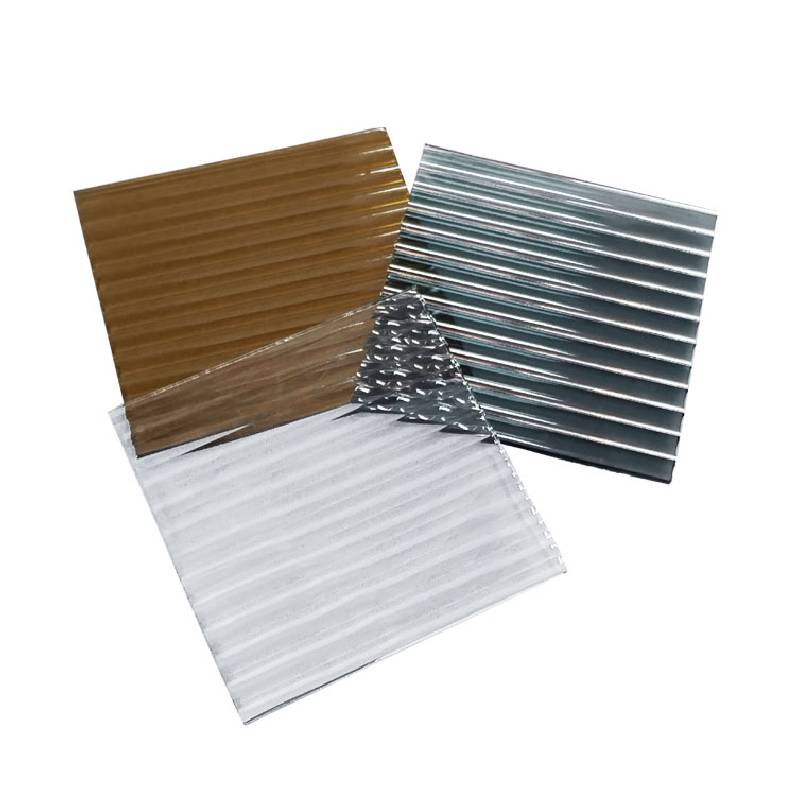The Aluminum Mirror Coating Process A Comprehensive Overview
The aluminum mirror coating process is a crucial technology widely used in various applications, from optical devices to architectural elements. This highly efficient method enables the production of reflective surfaces that possess excellent optical properties while being cost-effective and versatile. In this article, we will explore the steps involved in aluminum mirror coating, its advantages, applications, and future trends.
Understanding Aluminum Coating
Aluminum coatings are primarily applied to glass or plastic substrates to create reflective surfaces. The process typically involves the physical vapor deposition (PVD) technique, where aluminum is vaporized in a vacuum chamber and deposited onto the substrate. This method produces a thin layer of aluminum, resulting in a smooth, highly reflective surface.
The Coating Process Step-by-Step
1. Preparation of the Substrate The first step in the aluminum mirror coating process is to prepare the substrate material, which can be glass or plastic. The substrate must be clean and free from any contaminants. This often involves washing with solvents and thorough rinsing to ensure optimal adhesion of the aluminum layer.
2. Vacuum Chamber Setup The next step involves placing the prepared substrates into a vacuum chamber. A high vacuum environment is essential to prevent contamination and oxidation of the aluminum during the deposition process. The vacuum also helps to ensure uniformity and high quality of the coating.
3. Aluminum Vaporization Once the vacuum chamber is ready, aluminum is heated to a point where it vaporizes. This is typically achieved using thermal evaporation or electron beam evaporation techniques. During this phase, the vaporized aluminum particles begin to travel towards the substrate.
4. Deposition on the Substrate As the aluminum vapor comes into contact with the cold substrate surfaces, it condenses to form a thin layer. It's essential to control the thickness of this layer, which usually varies between 100 to 500 nanometers, depending on the desired reflective properties.
5. Post-Coating Treatments After the aluminum has been deposited, additional treatments may be employed. These can include the application of protective coatings to enhance durability, corrosion resistance, and overall performance. Common protective layers include dielectric coatings and protective lacquers.
aluminum mirror coating process
6. Testing and Quality Control The final step involves rigorous testing to ensure the aluminum mirror meets the required specifications. This often includes assessments of reflectivity, adhesion, and surface quality. High-quality aluminum mirrors should exhibit a reflectivity of up to 90% for visible light, making them ideal for various applications.
Advantages of Aluminum Mirror Coating
The aluminum mirror coating process boasts several advantages
- Cost-Effectiveness Aluminum is relatively inexpensive compared to other reflective materials, making this process economically favorable for large-scale production.
- High Reflectivity Aluminum mirrors offer excellent reflectivity across a wide range of wavelengths, particularly in the visible spectrum.
- Lightweight Aluminum mirrors are lighter than glass mirrors, making them easier to handle and install in various applications.
- Versatility They can be easily manipulated and incorporated into different designs in both technical and aesthetic applications.
Applications of Aluminum Mirrors
Aluminum-coated surfaces are used in various fields
- Optical Instruments This includes telescopes, cameras, and laser systems, where precise reflection is critical.
- Architecture Architectural mirrors adorn buildings, providing aesthetics and functionality.
- Automotive Industry Reflective surfaces improve visibility in headlights and mirrors, enhancing safety on the roads.
Future Trends
As technology evolves, so does the aluminum mirror coating process. Innovations in nanotechnology and advanced coating materials are paving the way for enhanced performance and new applications. For instance, integrating smart coatings that adapt to environmental conditions could revolutionize how reflective surfaces are used in the future.
In conclusion, the aluminum mirror coating process is a vital technique in modern manufacturing, offering a blend of performance, economy, and versatility. As industries continue to innovate, the applications and capabilities of aluminum-coated mirrors will undoubtedly expand, continuing to play a critical role across diverse fields.
 Afrikaans
Afrikaans  Albanian
Albanian  Amharic
Amharic  Arabic
Arabic  Armenian
Armenian  Azerbaijani
Azerbaijani  Basque
Basque  Belarusian
Belarusian  Bengali
Bengali  Bosnian
Bosnian  Bulgarian
Bulgarian  Catalan
Catalan  Cebuano
Cebuano  Corsican
Corsican  Croatian
Croatian  Czech
Czech  Danish
Danish  Dutch
Dutch  English
English  Esperanto
Esperanto  Estonian
Estonian  Finnish
Finnish  French
French  Frisian
Frisian  Galician
Galician  Georgian
Georgian  German
German  Greek
Greek  Gujarati
Gujarati  Haitian Creole
Haitian Creole  hausa
hausa  hawaiian
hawaiian  Hebrew
Hebrew  Hindi
Hindi  Miao
Miao  Hungarian
Hungarian  Icelandic
Icelandic  igbo
igbo  Indonesian
Indonesian  irish
irish  Italian
Italian  Japanese
Japanese  Javanese
Javanese  Kannada
Kannada  kazakh
kazakh  Khmer
Khmer  Rwandese
Rwandese  Korean
Korean  Kurdish
Kurdish  Kyrgyz
Kyrgyz  Lao
Lao  Latin
Latin  Latvian
Latvian  Lithuanian
Lithuanian  Luxembourgish
Luxembourgish  Macedonian
Macedonian  Malgashi
Malgashi  Malay
Malay  Malayalam
Malayalam  Maltese
Maltese  Maori
Maori  Marathi
Marathi  Mongolian
Mongolian  Myanmar
Myanmar  Nepali
Nepali  Norwegian
Norwegian  Norwegian
Norwegian  Occitan
Occitan  Pashto
Pashto  Persian
Persian  Polish
Polish  Portuguese
Portuguese  Punjabi
Punjabi  Romanian
Romanian  Russian
Russian  Samoan
Samoan  Scottish Gaelic
Scottish Gaelic  Serbian
Serbian  Sesotho
Sesotho  Shona
Shona  Sindhi
Sindhi  Sinhala
Sinhala  Slovak
Slovak  Slovenian
Slovenian  Somali
Somali  Spanish
Spanish  Sundanese
Sundanese  Swahili
Swahili  Swedish
Swedish  Tagalog
Tagalog  Tajik
Tajik  Tamil
Tamil  Tatar
Tatar  Telugu
Telugu  Thai
Thai  Turkish
Turkish  Turkmen
Turkmen  Ukrainian
Ukrainian  Urdu
Urdu  Uighur
Uighur  Uzbek
Uzbek  Vietnamese
Vietnamese  Welsh
Welsh  Bantu
Bantu  Yiddish
Yiddish  Yoruba
Yoruba  Zulu
Zulu 

